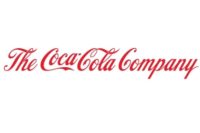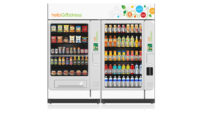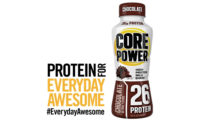Although sports and protein drink companies primarily market to athletes and active consumers, the category’s consumer base is shifting. In fact, the number of high-volume sports drink users, or consumers who drink eight or more sports drinks a month, has been declining in recent years offset by more casual sports drink users joining the consumer ranks, according to Rockville, Md.-based Packaged Facts’ February 2015 report “Functional Foods: Key Trends by Product Categories and Benefits.”
Yet, approximately 34 percent of all surveyed consumers and nearly half of surveyed consumers aged 18-24 drink sports drinks when they are not working out, Mintel Food and Drink Analyst Beth Bloom told Beverage Industry in its May issue. “Such usage indicates the value of product positioning that moves beyond a sports focus and highlights attributes such as hydration and flavor,” she wrote in the Chicago-based market research firm’s January 2015 “Nutritional and Performance Drinks” report.
Packaged Facts reports that sports drink consumption is highest for Hispanic and black adults at 45 percent each, followed by 34 percent of white adults and 31 percent of Asian adults.
Protein drinks, which commonly have been associated with muscle recovery and bone health for athletes, now are being valued for their satiety benefits as non-athlete consumers opt for them as snacks or meal replacements, said Chris Schmidt, consumer health analyst at Chicago-based Euromonitor International, in Beverage Industry’s May issue. Consumers also are using these beverages and supplements to support other special diets, like vegetarian and vegan and even medical diets recommended after bariatric surgery, he notes.
In addition, protein drinks can target elderly consumers who can use the products to ward off conditions such as sarcopenia that can result in muscle loss and weakness, Natalie Tremellen, market analyst at Innova Market Insights, the Netherlands, told Beverage Industry.
As a result of these expanded consumption occasions and expanded consumer base, approximately 61 percent of U.S. adults consume sports drinks, supporting overall segment sales, Mintel’s Bloom wrote in a January report titled “Nutritional and Performance Drinks.” In line with this, the shelf-stable non-aseptic sports drink category grew nearly 4.9 percent in dollar sales for the 52 weeks ending May 17 in U.S. supermarkets, drug stores, mass merchandisers, gas and convenience stores, military commissaries, and select club and dollar retail chains, according to Chicago-based Information Resources Inc. (IRI). Gatorade, a brand of Purchase, N.Y.-based PepsiCo Inc., continues to lead the segment with its products claiming seven of the Top 10 spots on IRI’s shelf-stable non-aseptic sports drink list for the period. Its Gatorade Perform line topped the Top 10 list with more than $3.2 billion in sales, a 2.4 percent increase in sales in the timeframe. Atlanta-based The Coca-Cola Co.’s Powerade brand claimed the remaining three spots on the Top 10 list.
Similarly, Euromonitor reports that the ready-to-drink (RTD) protein drinks market grew by newly 24 percent in 2014 dollar sales compared with 2013 in its measured off-premise channels.
As sports and protein drinks bleed into other consumer groups, other beverage segments are taking the sports occasion field.
In the RTD protein drinks segment, MusclePharm Corp., Newark, Ohio, launched CocoProtein, which features a blend of coconut water and protein. The cross-over beverage, which is available in Chocolate and Piña Colada varieties, provides vitamins, minerals and 20 grams of protein to build lean muscle, increase endurance, fuel recovery and keep the consumer hydrated, the company says. In addition, the gluten-, lactose- and dairy-free beverages contain more potassium than a banana, it says.






